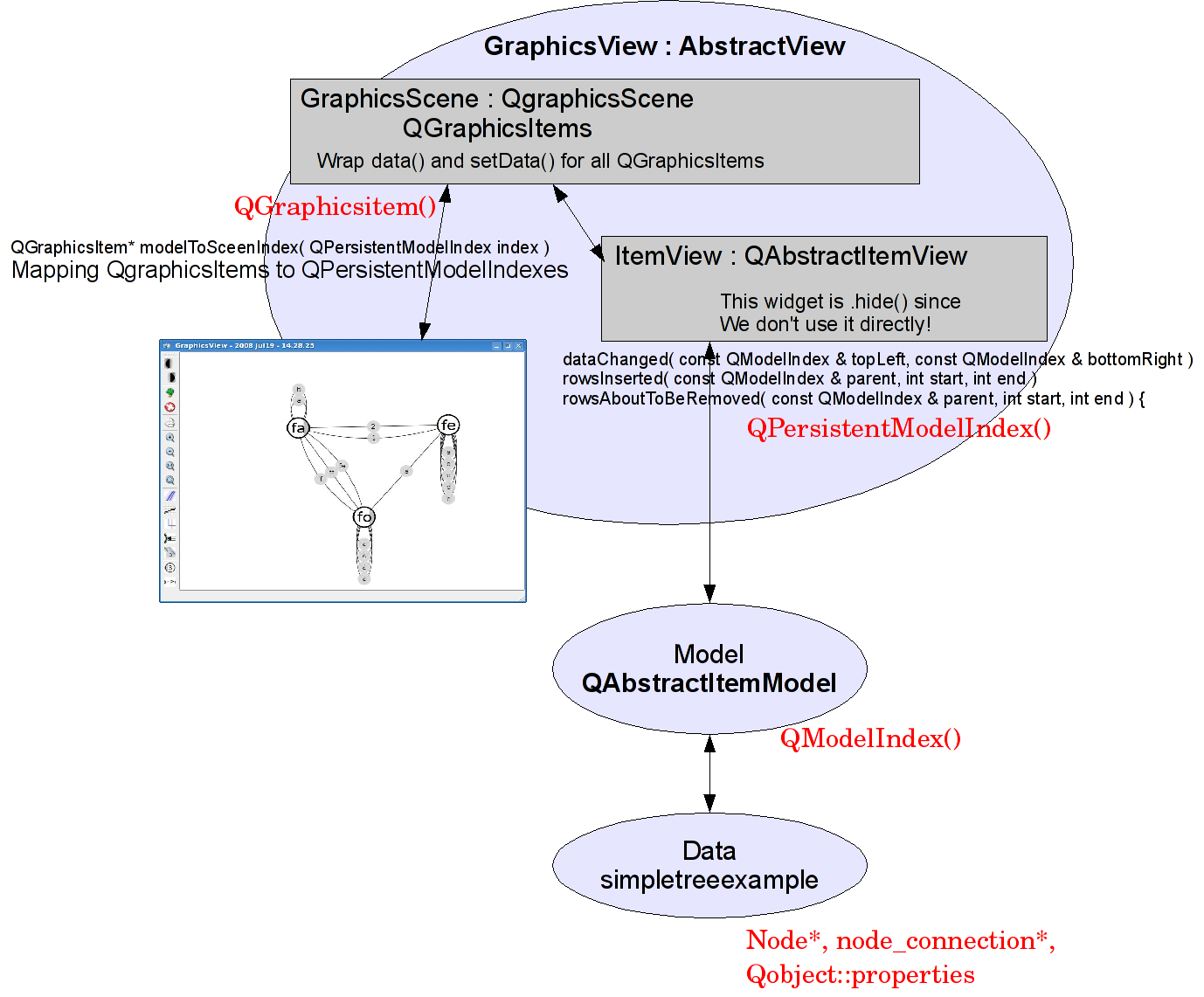qgraphicsscene used as a qabstractitemview ii
02 feb 2010
motivation
Again some thoughts about this complex topic, but this time with content not as last time when i accidentally published an unfinished article - i’m very sorry for that.
updated diagram illustrating the QGraphicsScene used as a QAbstractItemModel
the primary difference to the last one i published is that there is the other view i’ve integrated into the automate project - the ‘TreeView’
extending QGraphicsItem to be used with a QAbstractItemModel
Q: what is this section about (in a few words)?
A: now as QGraphicsItem is used to represent QModelIndex’es they need a way to query data from the Model, this is how it can be done
in qt4 there are a few different classes using QGraphicsItem as a base class. originally i wanted to extend the items with virtual inheritance [1] but then the ‘dreaded diamond’ problem showed me that it can’t be done since i could NOT change the way a QGraphicsTextItem would inherit from QGraphicsItem (read: i couldn’t add the keyword virtual between
'public **_here_ **QGraphicsItem'and if that can’t be done the virtual inheritance can’t be used). of course one could now change the qt core library but that would be wrong ‘in concept’ since my application should be able to be used with any version (for example qt 4.4) not just one single version i’ve changed.
so after hours of figuring i came up with the class GraphicsItemModelExtension [2], it makes use of pure virtual functions and since QGraphicsItem(s) do have a data() and setData() function which is exactly the same function name used with the Model i had to rethink the function calls. now data() and setData() for the Model used from a QModelIndex via GraphicsItemModelExtension are named modelData()/setModelData() instead.
but what makes you want to use the GraphicsitemModelExtension class? in contrast to my previous attempt it stores the QPersistentModelIndex and you don’t have to rely on an existing scene() which is then casted from a QGraphicsScene into a GraphicsScene which then would provide a Model* which finally would be used to query data.
the basic concept after adding an item to the QGraphicsScene is that one needs to query data right in the constructor, for instance you need various properties as ‘label’ or ‘color’. since the normal item now has index() it can instantly (even when not added into a scene() yet) query the Model for data. NOTE: right after an item is added to a QGraphicsScene it does NOT have a scene() yet, if you try to query scene() from a constructor of a QGraphicsItem you WILL get NULL which was a big flaw in my previous implmenetaions. but now that problem is gone and because of the nature of pure virtual functions (yes QGraphicsItemModelExtenstion is actually an abstract base class) it helps to design new custom GraphicItems.
again ‘why i used properties instead of another hierarchy layer’
in the automate [3] project i had a TreeView which does have several columns and one can display one property per column, this is done by the data(..) implementation and is quite easy, just see my code. however in the spring random map generator project [4] i need the properties not in one row per column but instead all properties should be top down with:
module name
propertyName propertyValue (displayed by a delegate)
propertyName propertyValue (displayed by a delegate)
propertyName propertyValue (displayed by a delegate)
...so i can’t use the data(..) function as i did last time. now i need one QModelIndex per row but my model currently does not have properties as QModelIndex’es at all. so what should i do? i’m still not sure about this… but as soon as i found a nice solution i will write about it.

